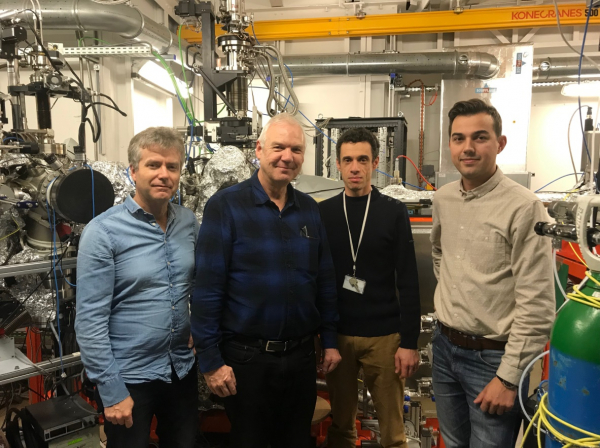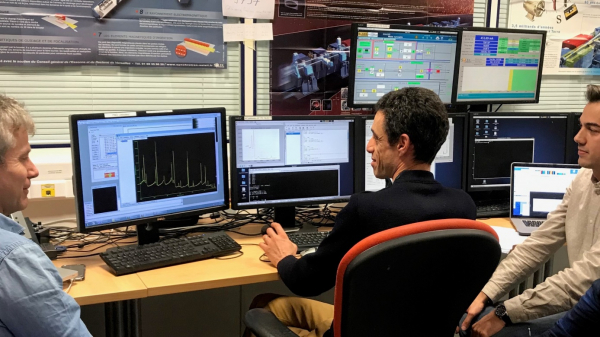
Many private innovators are today facing difficult problems on materials surface characterization. The development of reliable and convenient probing techniques could however change the game in a nearly future. This article presents Synchrotronix a private Contact Research Organization (CRO) that promotes and develops Light Sources capacities towards the Industry. This CRO was also granted from a European funding program for SMEs (CALIPSOplus/TamaTA) at the occasion of their venue at SOLEIL.
Limits of the conventional methods
Conventional methods such as GDOES (Glow Discharge Optical Emission Spectroscopy) are today widely used by the Industry to analyze depth profile materials. Such methods allow studying processing effects (such as steel hardening) or the composition and functioning of layer structures in devices (like batteries).
However, some problems solving require additional information such as the chemical states of the elements (degree of oxidation) and their chemical environment (closest atomic neighborhood and nearby) as we get away from the extreme surface in direction of the bulk.
In those cases, techniques like XPS (X-Ray Photoelectron Spectroscopy) can be used with extreme sensitivity on the first atomic layers. Nevertheless, XPS comes with several drawbacks starting with a careful sample preparation and cleaning. This is a mandatory step to avoid contaminants at the surface of the material (dirt) that can lead to artefacts during the probing. Another problem concerns data recording that is known as tedious and time-consuming. For that reasons, we generally find XPS in academic places as it remains mostly unused in the Industry.

Mårten EDWARDS (Synchrotronix), Robert MOBERG (Synchrotronix),
Jean-Pascal RUEFF (GALAXIES/SOLEIL), Konstantin SIMONOV (Uppsala University)
New perspectives for private actors
Synchrotron Hard X-ray Photoelectron Spectroscopy (HAXPES) is a powerful tool to investigate extreme surface oxidation. This is preferred to XPS because of its lower sensitivity to surface dirt leading to less artefacts and ease to analyse. With the combination of Synchrotronix new approach and the fast data recordings available in synchrotrons (due to high beamlight brillance) the cost may fall down with more reliable results. In the nearly future, this service could become a new standard for private actors but are still requiring specific expertise

Jean-Pascal RUEFF (GALAXIES beamline manager)
and Synchrotronix users monitoring data acquisition, 4th December 2018
Taking advantage of CALIPSOplus European project
This experiment was the occasion for SOLEIL to welcome for the first time a paid study supported by CALIPSOplus. This project is intended to European SMEs to strive for innovation and competitiveness of our territories by making access to Light Sources (synchrotrons and FELs) easier and cheaper. SOLEIL had a particular pleasure to host this experiment, opening new partnership perspectives between European synchrotrons and private CROs. SOLEIL and Synchrotronix strongly recommend to any interested company to look for information on the dedicated webpage.
The Industrial Relationship Team.
industrie@synchrotron-soleil.fr
 |
CALIPSOplus has received funding from the European Union’s Horizon 2020 research and innovation programme under grant agreement No 730872 |
